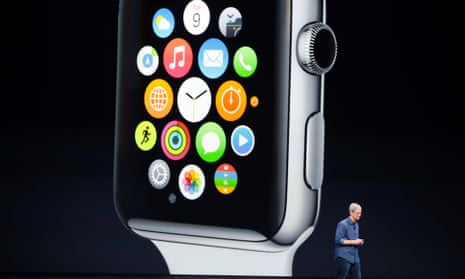Laden with bags and fumbling to open the car door? Late for a meeting, struggling to use your phone to find the venue without bumping into lampposts?
In our annual Trends report 2015, Fjord predicts that this could be the year where wearables, hearables and nearables come to your rescue.
Over the next 12 months we believe that the technological gateways that consumers use to interact with their surroundings will both expand and become increasingly standardised, making ordinary actions more effortless and stress-free.
High on the agenda is the increasing tension between consumers’ obsession with smartphones and the need to focus on the real world around us. One recent survey revealed that we pick up our phones on average up to 1,500 times a week.
The market is opening up for complementary smart devices that take some of the tasks away from the phone, providing us with easier access to the same digital content that smartphones offer, without requiring us to bury ourselves in a screen.
To be able to do that, these alternative smart devices need to offer at least some of the functionality of smartphones such as being able to provide geographical location, or alerts offering directions and reminders.
With the advantage of being glanceable, wearables are already making inroads into the smartphone’s territory. Smart watches, for example, offer quick and light interactions such as providing real-time snapshots of weather, travel and stock market information and notifying the wearer of new messages through a vibration on the skin.
That said, wearables face challenges in relation to technical accuracy, battery life and consumer fickleness over activity tracking – over one-third of users in the US abandoned their fitness device after six months.
Hearables – smart ear devices featuring 3D audio notification – may prove a more accurate, less obtrusive sub sector of health and fitness wearables. Proximity to blood vessels within the ear mean that products such as Valencell’s heart rate earphones allow users to precisely and continuously measure weak blood flow signals during extreme physical activity. This provides a highly accurate picture of heart rate, respiration rate, and other blood flow parameters, while allowing them to still listen to music while they train.
Hearables also potentially have applications outside health and fitness, and could be used to take over smartphone functions such as providing directions, price comparison information and localised offers. That said, the complexities of audio design such as the need to allow for the wide variability of human voices may still prove to be an obstacle to widespread development of hearables.
In addition to wearables and hearables, another layer of technology – nearables – are poised to start making our interactions with everyday life more straightforward. Like wearables and hearables, nearables represent a step towards a global network of interconnected devices.
However, unlike wearables and hearables which move with us, nearables are static, comprising ordinary objects that become “smart” once a wireless electronic sensor which also works as a transmitter (such as a Bluetooth Smart beacon) are attached to them and start broadcasting digital data to nearby devices.
Nearables are becoming ubiquitous as traditionally non-digital businesses integrate the technology into their services. Examples include Starwood Hotels and Resorts, which introduced virtual doors, made unlockable via smartphone and Volvo’s virtual car locks.
So will wearables, hearables and nearables successfully challenge consumers’ addiction to the smartphone? Fjord’s view is that the reliance of new devices such as watches, sensors, wearables on the smartphone for connectivity, data display, and software updates means it could retain its dominance for some time to come.
As consumer demand for devices that require less effort and screen time than smartphones increases, designers of new services and devices will ask searching questions about the smartphone’s role in delivering quality consumer experiences.
With an immense amount of activity in this space from start-ups to large corporations, we can expect a lot of failures that businesses can learn from as the quest for a multi-functional wearable, glanceable, hearable alternative to the smartphone that is also stylish and comfortable to wear, gains pace.
Mark Curtis is chief client officer, Fjord, Design and Innovation from Accenture Interactive
More like this
- The Apple Watch team must work closely with developers to avoid Google Glass’s fate
- Connected spaces: the next step for the internet of things
To get weekly news analysis, job alerts and event notifications direct to your inbox, sign up free for Media Network membership.
All Guardian Media Network content is editorially independent except for pieces labelled “Brought to you by” – find out more here.
